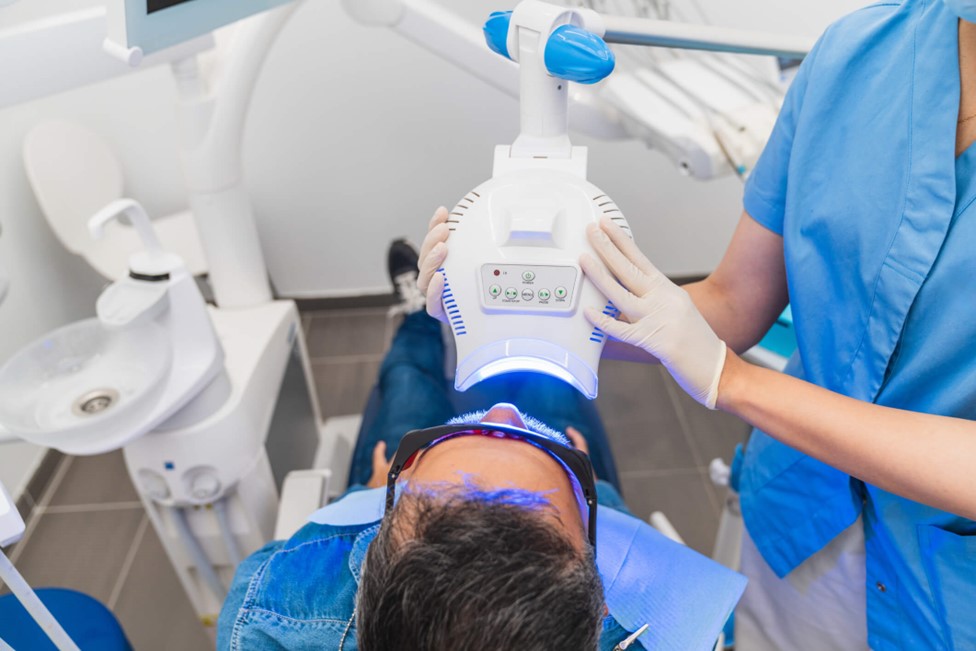How to Safely Whiten Sensitive Teeth
Almost everyone wants a brighter smile, but teeth whitening is notorious for causing sensitivity. Fortunately, with the correct products and methods, whitening even the most delicate smile is possible without causing pain. Here’s what you need to know about achieving bright, beautiful results with little to no discomfort.
Why Does Teeth Whitening Cause Sensitivity?
To understand why some methods make your teeth feel tender, it is helpful to examine what’s happening beneath the surface. Most whitening products rely on peroxide-based formulas that break apart stain molecules within the enamel. These molecules absorb into the tooth and release oxygen, lightening pigmentation as they go.
If the whitening agent penetrates the dentin—the sensitive layer beneath your enamel—it can trigger nerve responses that feel sharp or tingling. This response is typical among individuals with naturally thin enamel or receding gums, as the whitening agent reaches the inner tooth structure more easily.
Best Whitening Ingredients for Sensitive Teeth
Certain ingredients are better suited for those with sensitive teeth. Hydrogen peroxide and carbamide peroxide remain the most effective and widely used for professional whitening. However, the concentration and delivery system matter. Given enough time, lower concentrations in controlled formulations can still achieve impressive results without overwhelming your teeth.
In addition to peroxides, ingredients like potassium nitrate and fluoride help ease sensitivity. Potassium nitrate helps calm the nerve endings within the dentin, while fluoride strengthens enamel, offering better resistance to whitening irritation.
Besides knowing what ingredients to look for, you should also know what to avoid. Steer clear of abrasives such as activated charcoal or gritty pastes. These substances may temporarily lift surface stains but often do so by scraping away enamel. Once enamel is lost, it doesn’t regenerate. While less aggressive, baking soda still carries a risk of enamel wear when used improperly or excessively.
Safe Teeth Whitening for Sensitivity
Several teeth whitening methods are suitable for sensitive teeth. The best choice depends on the results you’re after and how much time you’re willing to invest.
Whitening Toothpaste
A gentle starting point, whitening toothpaste is designed for daily use and usually contains mild polishing agents rather than potent bleaching compounds. It gradually removes surface stains after weeks or months of use without causing irritation. Some formulas also include potassium nitrate, which offers extra protection for sensitive teeth.
Whitening Mouthwash
Mouthwashes with whitening properties offer low-impact stain removal. These products are easy to incorporate into your routine, and the risk of sensitivity is minimal because they contain diluted whitening agents. Just know that mouthwashes are more of a maintenance product, preventing stains from worsening rather than generating visibly whiter teeth.
Off-the-Shelf White Strips
This safe whitening method uses low-concentration peroxide for more noticeable results than toothpaste or mouthwash. While relatively effective, they can be hit or miss for people with sensitive teeth. The key is to choose a product labeled for sensitivity, which uses lower peroxide levels than standard white strips, and follow the instructions carefully.
Whitening Emulsions or Pens
These products apply whitening agents directly to the teeth in a soft gel form. Many come with built-in desensitizing ingredients, making them a convenient choice for touch-ups or modest whitening over time. They also tend to avoid the full-mouth exposure that strips create, which reduces the chance of gum irritation.
Professional-Grade Take-Home Whitening Treatments
Custom, dentist-approved teeth whitening kits are a step above anything you’ll find at a retail store. Each kit includes professional-strength whitening gel and trays crafted to fit the exact shape of your mouth. This precise fit ensures that the whitening agent stays on your teeth while minimizing contact with your gums. Be prepared to use the trays for 20 minutes per day for two to four weeks. This method provides noticeable, long-lasting results using a gentle, gradual process.
In-Office Teeth Whitening
If you’re looking for immediate, dramatic results, professional in-office whitening is the most efficient choice. Your dentist applies a special light-activated gel to your teeth, followed by targeted lighting to accelerate the gel’s performance and allow it to reach deeper layers of the enamel. The session usually takes about an hour and brightens your smile several shades in a single visit. Close monitoring allows your dentist to make adjustments that minimize sensitivity throughout the treatment.
Whiten Your Smile without Sensitivity
S&C Dental Scottsdale offers cosmetic solutions built with your comfort and confidence in mind. Our team has decades of experience helping thousands of patients discover brighter smiles through professional methods that are both gentle and effective. Whether you want to try quick in-office whitening or a customized take-home kit, expect simple, safe, and satisfying results. Contact us today for help finding the whitening solution that works for you.



